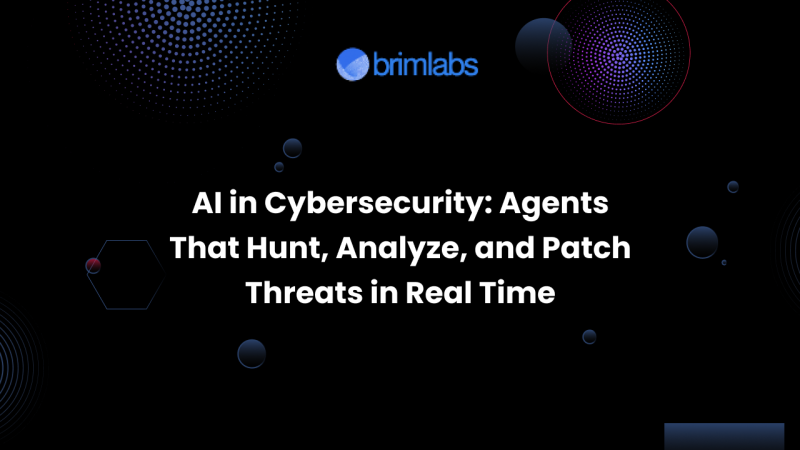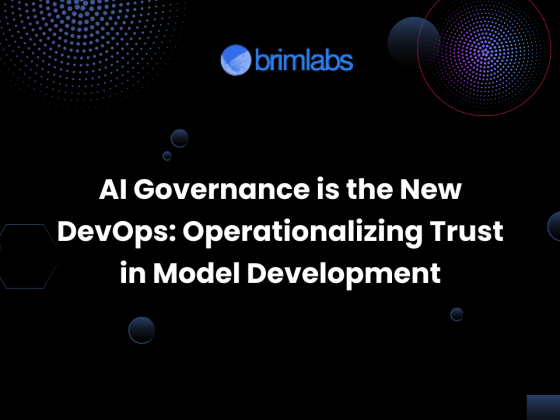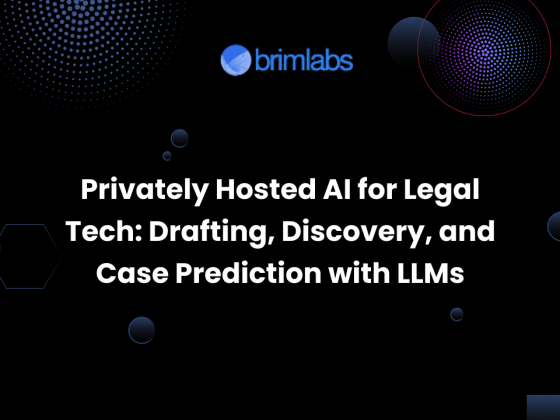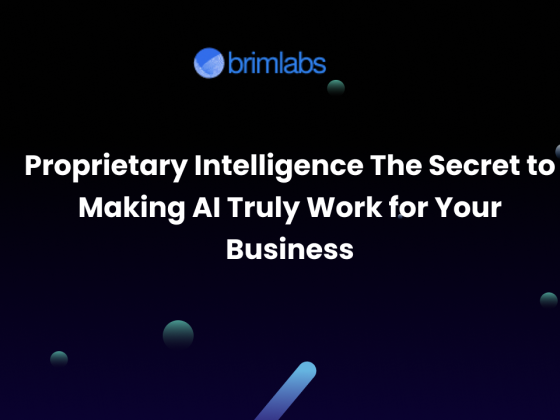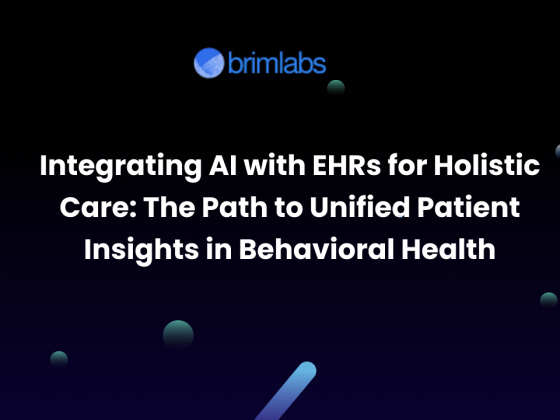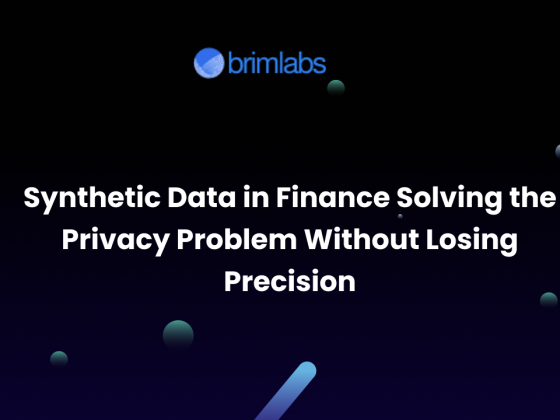Cybersecurity is no longer about building walls, it’s about building smart, responsive systems that adapt, learn, and react in real time. With the growing sophistication of cyberattacks and the scale of cloud-native infrastructure, traditional tools simply can’t keep up.
Enter AI-powered agents, intelligent, always-on digital defenders capable of hunting, analyzing, and even patching threats faster than any human team could. These aren’t passive monitoring tools. They’re autonomous actors trained to detect anomalies, understand attack vectors, and respond with precision, without waiting for human intervention.
In this blog, we explore how these agents work, the many forms they take, and why they’re reshaping the future of cybersecurity.
Why Cybersecurity Needs AI Agents
Today’s enterprise environments generate thousands of alerts every day. SOC teams are overwhelmed, and threat actors are using automation and AI themselves to exploit zero-day vulnerabilities, mimic user behavior, and launch advanced phishing campaigns.
The gap between attacker speed and defender response is growing.
AI agents fill this gap by:
- Scanning vast systems continuously
- Learning from behavior patterns
- Correlating multiple threat signals
- Acting autonomously to contain damage
These agents aren’t just replacing manual monitoring, they’re building a new kind of defense stack, one that’s intelligent, adaptive, and scalable.
Core Functions of AI Cybersecurity Agents
Let’s look at the main types of AI agents and what roles they play across the cyber defense lifecycle:
1. Threat Hunting Agents
These agents continuously sweep endpoints, cloud apps, networks, and user sessions to detect anomalies and zero-day behaviors. They don’t need pre-programmed rules, they learn from live activity and flag anything unusual in real time.
2. Threat Analysis and Correlation Agents
When suspicious behavior is detected, analysis agents dive deeper, correlating logs, access patterns, threat intel, and user context to decide whether it’s a false alarm or an actual incident. These agents reduce noise and help prioritize responses.
3. Response and Patching Agents
Once confirmed, response agents step in to quarantine affected systems, revoke access, or deploy fixes automatically. Some integrate with orchestration tools to enforce policy, apply patches, or roll back changes, often in seconds.
Expanding the Defense: Other Key AI Cyber Agents
Beyond the core lifecycle, cybersecurity now depends on a diverse fleet of AI agents designed for specific layers of the security stack:
4. Identity & Access Monitoring Agents
These agents track user behavior across logins, access requests, and privileges. When they spot anomalies, like impossible travel logins or data access spikes, they flag or block suspicious sessions instantly.
5. Phishing Detection Agents
Using NLP, visual recognition, and behavior modeling, these agents scan inbound emails and messages for phishing attempts. They evaluate sender history, tone, domain spoofing, and urgency cues to identify targeted social engineering attacks.
6. Insider Threat Detection Agents
These monitor internal behavior such as file downloads, unusual access to confidential folders, or use of unauthorized USBs. By modeling each employee’s behavior, they detect and flag actions that could signal malicious or negligent insider risk.
7. Network Traffic Analysis Agents
These agents scan for lateral movement, unusual data flows, or unknown devices trying to connect. They’re crucial for spotting stealthy attacks that bypass endpoint or firewall protections.
8. Threat Intelligence Aggregation Agents
Instead of depending on human analysts to sift through intel feeds, these agents scan open-source, vendor, and dark web sources to enrich context around detected threats, automatically mapping new indicators of compromise (IOCs).
9. Honeypot & Deception Agents
These deploy decoy databases, credentials, or systems to lure attackers. Once an attacker engages with a honeypot, telemetry is recorded, and the threat actor’s tactics can be analyzed in real time.
10. Compliance Enforcement Agents
These agents continuously monitor configurations and activity logs against compliance standards like GDPR, HIPAA, or SOC 2. They can flag policy violations or auto-remediate infrastructure misconfigurations as they happen.
11. Red Teaming & Simulation Agents
Designed for offensive security, these agents simulate attacks on live or sandbox environments to test system resilience, response readiness, and vulnerability management. Think of them as automated ethical hackers.
12. Data Loss Prevention (DLP) Agents
These agents scan outbound traffic, file transfers, and cloud sync tools for potential leakage of sensitive data. Using deep learning, they recognize sensitive content even if it’s disguised or embedded in new formats.
13. Policy Tuning Agents
By learning from alert fatigue and incident history, these agents auto-tune detection rules and firewall policies to reduce false positives and sharpen detection sensitivity over time.
Real-World AI Agent Use Cases
- Darktrace Antigena isolates compromised devices in real time, stopping threats before they spread across networks.
- CrowdStrike Falcon uses AI to correlate multi-surface telemetry for preemptive threat neutralization.
- Microsoft Defender leverages AI to auto-isolate suspicious sessions and enforce endpoint security policies.
- At Brim Labs, we’re building AI agents that watch for fraud patterns in fintech platforms, trigger smart access controls, and escalate real-time threats to human analysts only when necessary.
Benefits of AI Cybersecurity Agents
- Real-time detection and action: AI agents close the time gap between intrusion and containment.
- Scalability: Agents can monitor thousands of endpoints, user sessions, and network nodes simultaneously.
- Smarter prioritization: AI understands context, reducing noise and highlighting truly critical issues.
- 24/7 defense: Unlike human teams, agents operate continuously, no breaks, no fatigue.
- Cost efficiency: Reduces the need for large security teams without compromising coverage.
Caution: AI Isn’t Foolproof
Despite their power, AI agents must be governed carefully:
- They require high-quality, diverse training data
- Explainability is crucial, especially in regulated environments
- Human-in-the-loop oversight is still necessary for ambiguous or ethical decisions
- Agents themselves must be protected against manipulation or model poisoning
At the core, AI is only as effective as the system it operates within, and governance is key.
Final Thoughts
Cybersecurity is no longer reactive, it’s proactive, predictive, and autonomous. AI agents are now an essential part of modern defense, from detecting phishing emails to isolating ransomware, from watching insiders to patching systems in real time.
These agents don’t just improve security, they redefine it.
If your business is still relying on manual processes and static rules to handle cyber threats, it’s time to evolve. The threat actors are already using AI. It’s time your defense does too.
Brim Labs helps organizations across fintech, SaaS, healthcare, and beyond design and deploy AI agents tailored to their cybersecurity challenges. From threat detection to compliance enforcement, we build intelligent defenses you can trust.
Let’s make your cybersecurity real-time, adaptive, and resilient.
https://brimlabs.ai

